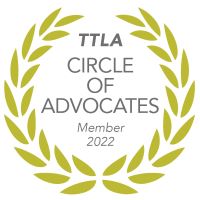Cerebral palsy isn’t always obvious from birth. While there may be some very early signs, like low muscle tone while your child is still an infant, most parents notice something is wrong when their child fails to reach the same developmental milestones as other children.
With severe cerebral palsy, most children are diagnosed within their first few months or by their first birthday but milder cases may mean a diagnosis isn’t possible until the age of three to five.
The following are developmental delays that may indicate your child has cerebral palsy.
Cerebral palsy can be difficult to detect in infants unless it’s severe. As your child ages, you may notice they have trouble reaching early milestones like rolling, crawling, sitting up, and walking. Only severe cerebral palsy is usually diagnosed prior to the age of 1. Possible early signs of cerebral palsy include:
Muscle spasms
Difficulty eating or swallowing
Preference for using just one side of the body
Poor muscle control or posture
Unable to hold the head up while on the stomach or in a supported seated position
Unable to hold up their head when picked up while lying flat on their back
Overextended neck and back while being held
Low muscle tone (hypotonic). Your baby may feel “floppy” when picked up
Stiff, tight muscles (hypertonic)
Cortical thumbs or persistently clasped thumbs
Difficulty bringing their hands together
Difficulty lifting the hands to the mouth
Cannot sit up or roll over by 6 months
Develops right or left-handedness very early
Once your baby is older than 10 months, you may notice lopsided crawling or pushing off with just one side of the body and dragging the other side. Some babies merely scoot on their bottoms or knees instead of crawling on all fours.
Most children with cerebral palsy are diagnosed between 18 and 24 months of age. The age at which your child should be crawling and learning to walk is when cerebral palsy becomes most evident. Depending on the severity of the CP, toddlers may not be walking by the age of 12 to 18 months or speaking basic sentences by 24 months.
Other signs of cerebral palsy at this age include:
Abnormal posture
Toe- or scissor-walking
Bone and joint contractures and deformities
Delayed reactions or clumsiness
Inability to control bowels or bladder
Sometimes the cause of cerebral palsy can’t be determined or avoided; it can happen in utero, during birth, or as a result of trauma as a young child.
Unfortunately, about 10-15% of cases of cerebral palsy are caused by medical malpractice. Sometimes a doctor, nurse, pharmacist, or other health care professional makes a mistake that affects your child for the rest of his or her life.
If you suspect your child’s cerebral palsy was related to a medical professional’s negligence, it’s important to remember that you have rights, and so does your child. An experienced Johnson City medical malpractice lawyer can help you explore your legal options and build a case to seek fair compensation that can be used to give your child the best possible future.
Contact The Haynes Firm at (423)451-4999to schedule a no-fee, no obligation consultation.






